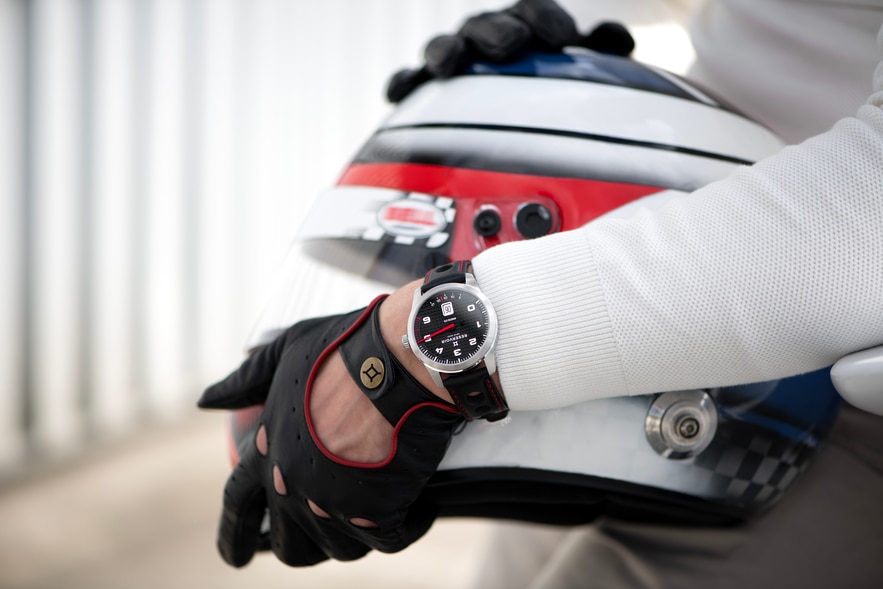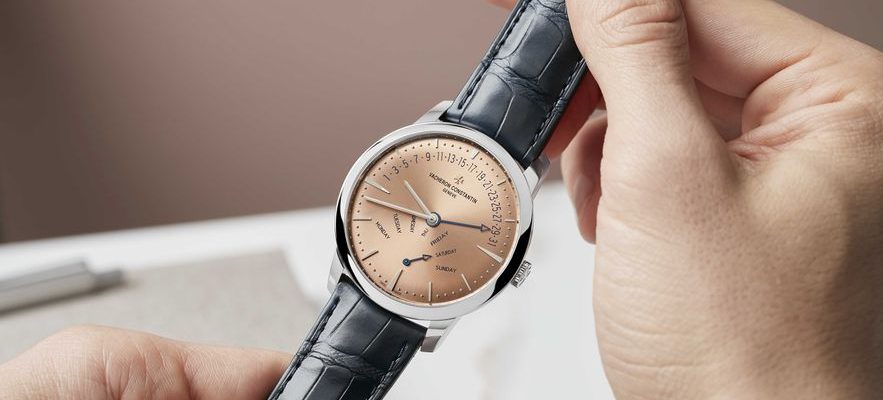It is one of the simplest and most spectacular horological complications at the same time. On a dial, a retrograde movement can be identified when the hand indicating a time measurement moves on a semi-circular scale or a section of a circle.
The main visual appeal of this display is the instantaneous return of the needle to the starting point, when it reaches the end of the scale. A leap back which we watch for the next trigger. The wait is more or less long depending on whether it is a window for seconds, minutes or a power reserve (1), a second time zone… or even the day of the week or the date. A so-called “retrograde” mechanism is used to display different temporalities, with as many aesthetic variations.
Thirty minutes in an arc
Centuries-old watchmakers, such as Vacheron Constantin, have made it a signature. During the Watches and Wonders trade show in Geneva, the manufacture also unveiled three new models fitted with retrograde hands in its Heritage, Overseas and Traditional collections.
Vacheron Constantin. Patrimony Date-Jour Retrogrades, retrograde complications evoking the iconoclastic displays of the 1920s and 1930s.
/ © Charles-Elie Lathion / VACHERON CONSTANTIN
Jaeger-LeCoultre, with the intention of balancing the legibility of the circular time display in the rectangular case of the Reverso Tribute Chronograph, has positioned a retrograde thirty-minute indicator in an arc of a circle at 6 o’clock.
A much more recent house – it was created in 2017 –, Reservoir has always been faithful to a retrograde minute display, combined with a jumping hour.

Reservoir. GT Tour Racing. Automatic movement with retrograde minute, jumping hour and power reserve.
/ © Laura Evrat Photography / Reservoir
Hublot goes even further with its Tourbillon Bi-Axis Retrograde, which combines a tourbillon with a bi-retrograde movement for the hours and minutes. Despite the complexity of this reference, reading the time remains intuitive.
(1) Time during which a watch runs without being wound.
